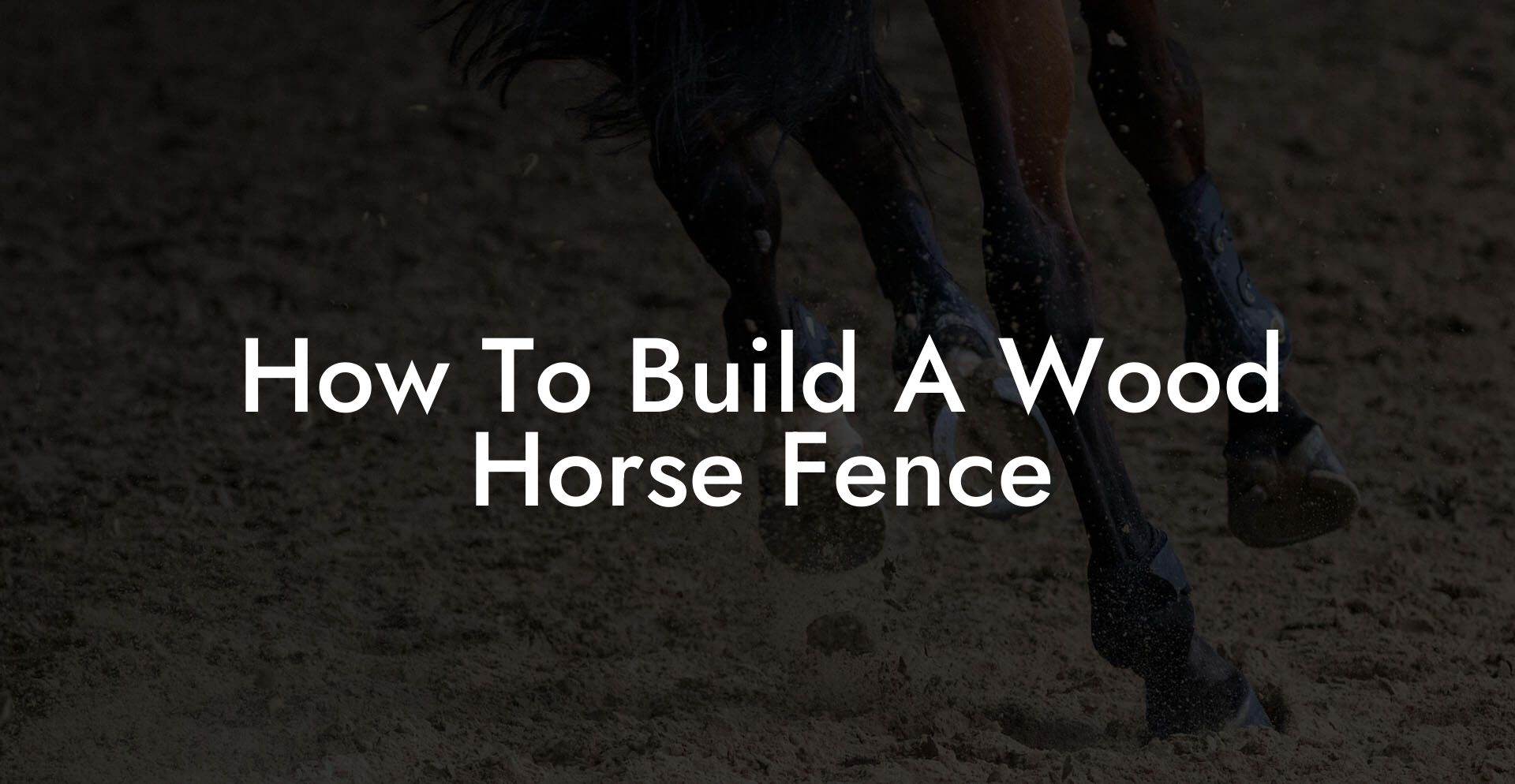Are you considering getting a horse and wonder how to construct a sturdy, attractive, and functional wooden fence to keep your equine friend safe and secure? Look no further! In this article, you'll learn how to build a wood horse fence that not only looks great but also serves as a secure barrier for your beloved animal.
How To Build A Wood Horse Fence Table of Contents
Why Choose a Wood Horse Fence?
Types of Wood for Horse Fences
Why Choose a Wood Horse Fence?
Wooden fences are a popular choice for horse owners due to several reasons:
- They are aesthetically pleasing and can blend well with any landscape.
- They're sturdy and can provide a secure barrier for your horse.
- Wood is a renewable resource, making it an environmentally friendly choice.
- With proper maintenance, a wooden fence can last for years.
Types of Wood for Horse Fences
There are various types of wood that can be used for constructing a horse fence. It's essential to choose the right type of wood for your fence based on your location and climate. Some popular choices include:
- Pressure-treated pine: It is resistant to decay and insects, making it a durable and affordable option.
- Cedar: Known for its natural resistance to weather and insects, cedar can last for years without chemical treatment.
- Redwood: Another naturally resistant wood species, redwood is known for its longevity and beauty.
- Oak: A dense hardwood, oak is an excellent option for a sturdy and durable fence.
Tools and Materials Required
Before starting on your fence construction, gather the necessary tools and materials:
- Wooden posts (pressure-treated pine, cedar, redwood, or oak)
- Wooden rails (cut to the desired length)
- Post-hole digger or auger
- Gravel for drainage in post holes
- Concrete mix to set the posts
- Screws, nails, or galvanized fence brackets for fastening rails to posts
- Paint or wood preservative
- Level, measuring tape, and hammer
Step 1: Plan Your Fence Layout
Measure and mark the perimeter of the area you want to enclose with your fence. Consider the following factors when planning your fence layout:
- Include enough space for your horse to move and graze comfortably.
- Take into account any natural barriers, such as trees and slopes, which can affect fence stability.
- Plan for gates and entry points for convenient access.
Step 2: Install the Posts
Dig post holes approximately 3-4 feet deep and spaced about 8-10 feet apart. Pour a few inches of gravel into each hole for drainage. Place the wooden posts into the holes, ensuring they are level and straight. Fill each hole with concrete mix, tamping it down to eliminate air pockets. Allow the concrete to cure for a few days.
Step 3: Attach the Rails
Secure the wooden rails to the posts using screws, nails, or galvanized fence brackets. It's recommended to use three rails for a standard horse fence, with the top rail positioned about 4-5 feet above the ground. Make sure the rails are level and evenly spaced along the length of the fence.
Step 4: Apply a Finish
Protect your fence by applying paint or wood preservative to the wood surface. This prevents moisture damage, insect infestation, and decay, ultimately increasing the fence's lifespan.
How To Build A Wood Horse Fence Example:
Imagine you've just purchased a 5-acre property for your horse, and you decide to encircle the area with a stunning cedar wood fence. Begin by planning your fence layout, taking into consideration any natural barriers and desirable gate locations. Next, you'll install the cedar posts, digging deep holes and securing them with gravel and concrete. Once the posts are in place, attach the cedar rails, ensuring they're level and evenly spaced. Finally, apply a coat of wood preservative to enhance the natural beauty of the cedar and protect it from the elements.
Congratulations, now you know how to build a wood horse fence that provides security and style for your equine companion! By following these steps, you'll create a beautiful and functional fence that will stand the test of time. Don't forget to share this article with fellow horse enthusiasts, and explore more guides on How to Own a Horse to become an expert in all things equine.













